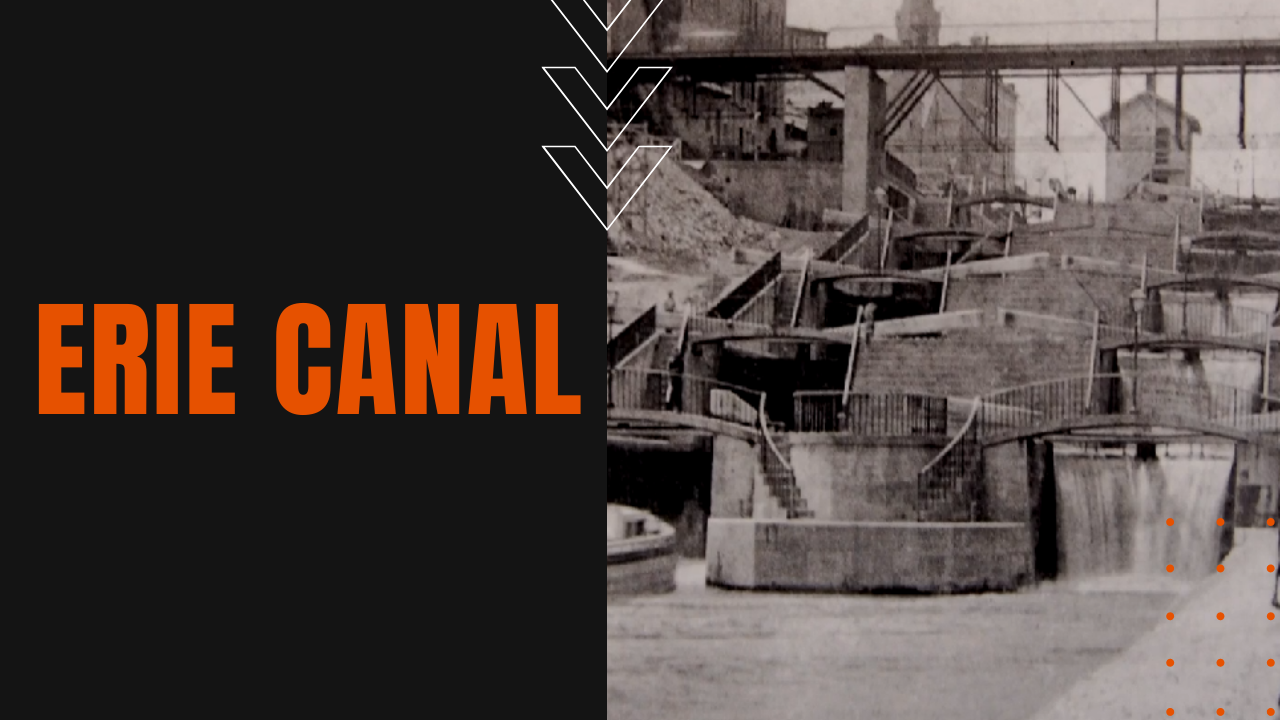Erie Canal

First proposed in the 1780s and then re-proposed in 1807, a survey was authorized, funded and executed in 1808, despite heavy opposition to the crazy notion of building a 363 mile manmade waterway connecting the Great Lakes to the Atlantic Ocean.
Nicknamed “Clinton’s Folly” or “Clinton’s Big Ditch,” New York Governor DeWitt Clinton’s ten-year dogged campaign to build such a waterway finally overcame his many opponents, including Presidents Thomas Jefferson and James Madison, who both considered the project preposterous.
When Was the Erie Canal Built?
For a nation just 41 years old, when digging finally began in 1817, the construction of the Erie Canal proved to be the first monumental feat of early large-scale American engineering, an event which ushered in the Industrial Age in America.
Dug entirely by hand, the Erie Canal includes 34 numbered locks beginning at Black Rock Lock and ending downstream at Troy Federal Lock, for a total elevation difference of 565 feet. Clocking in at 40 feet wide and four feet deep, the Erie Canal was largely built by Irish immigrants who worked 14-hour days and earned 80 cents a day, in some of the most hazardous working conditions the nation’s labor pool faced at the time.
The construction would go on for eight years, and despite the long time span, the project would be completed on time, in advance, and under budget.
Erie Canal Opens in 1825
Bands played and canons boomed when Clinton opened the canal in 1825, and he was soon vindicated when the Erie Canal became an immediate success.
Goods and people were able to travel faster and easier, dropping drayage costs by as much as 95%. The tolls collected soon paid the State of New York back for the canal’s $7 million dollar construction cost, proving DeWitt’s skeptics flat out wrong in a matter of months.
The Erie Canal’s peak year was 1855, when some 33,000 commercial passages took place, although since that high-water time period, commercial traffic continued a yearly and steady decline, finally coming to a close in 1994 when the last commercial ship “Day Peckinpaugh” was officially retired.
Today, the Erie Canal is mostly enjoyed by recreational watercraft, yet its vital role in the robust economic development of the Eastern and Mid-western regions of the United States is forever cemented in the annals of American history.
